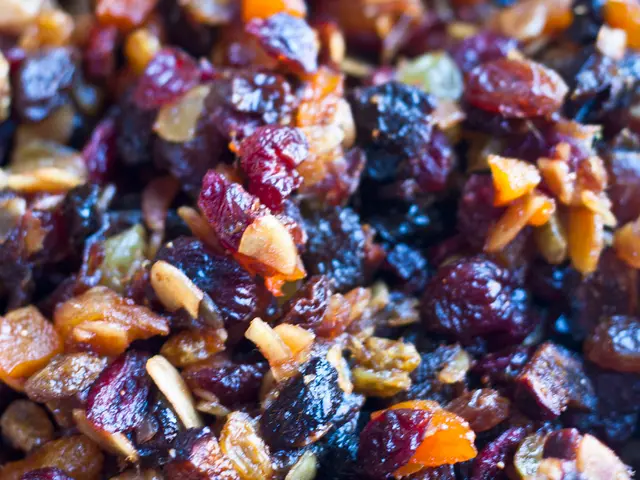Reverse psoriasis: Causes, symptoms, and additional information
In the realm of skin conditions, two ailments that can sometimes confound even the most seasoned healthcare professionals are Inverse Psoriasis and Jock Itch. Both conditions can manifest in similar areas, such as the groin or inner thighs, but they are distinct entities with unique characteristics.
Inverse Psoriasis, an autoimmune condition, arises when the immune system mistakenly attacks healthy skin, leading to inflammation and lesions. On the other hand, Jock Itch, or tinea cruris, is a fungal infection caused by dermatophytes like Trichophyton rubrum.
The symptoms of these conditions also vary. Inverse Psoriasis typically presents with bright red, purplish, or brown lesions that can feel inflamed and painful, often described as a burning or stinging sensation rather than itching. In contrast, Jock Itch is characterised by intense itching, redness, and a ring-like appearance.
Treatment for each condition also differs. Inverse Psoriasis requires treatments including prescription topical corticosteroids, oral medications, and biologics, with management often involving addressing the underlying autoimmune response. Jock Itch, however, is treated with antifungal medications, either topical or oral, and maintaining good hygiene and keeping the affected area dry can help prevent recurrence.
To distinguish between the two conditions, one should consider the location and appearance, symptoms, and response to treatment. Inverse Psoriasis tends to appear as smooth, red patches without a clear edge, whereas Jock Itch often presents with a more defined border and a ring-like appearance. Inverse Psoriasis is characterised by a burning sensation, whereas Jock Itch causes intense itching. Jock itch typically responds well to antifungal treatments, whereas inverse psoriasis requires treatments targeting the immune system.
It is crucial to consult a healthcare professional for an accurate diagnosis and appropriate treatment plan. Inverse Psoriasis can lead to various complications, including chafing, irritation from heat and sweat, secondary fungal or yeast infections, lichenification or thickening of the skin, sexual difficulties, thinned skin from the overuse of strong topical steroid creams, and comorbidities like cardiovascular disease, metabolic syndrome, anxiety and depression, psoriatic arthritis, Crohn's disease, and uveitis.
Despite their differences, it is important to note that both conditions can be mistaken for each other, as well as for other skin conditions such as intertrigo, superficial fungal infection, Darier disease, and Hailey-Hailey disease. Proper diagnosis and treatment are essential to manage these conditions effectively.
Inverse Psoriasis affects 21-30% of people with psoriasis and is more common in people with deep skin folds. Mild topical steroids are available over the counter to help reduce redness and swelling in both inverse psoriasis and Hailey-Hailey disease. Similar to inverse psoriasis, sunlight, heat, sweating, and friction often aggravate Hailey-Hailey disease.
In conclusion, while Inverse Psoriasis and Jock Itch can appear similar, understanding their differences and seeking professional medical advice is crucial for accurate diagnosis and effective treatment. Remember, Psoriasis is not contagious. The National Psoriasis Foundation recommends keeping the lesions in skin folds dry for both inverse psoriasis and Hailey-Hailey disease. With proper care and treatment, both conditions can be managed effectively.
- Inverse Psoriasis, an autoimmune condition, targets healthy skin, causing lesions and inflammation, contrary to Jock Itch, a fungal infection caused by dermatophytes like Trichophyton rubrum.
- Symptoms of Inverse Psoriasis include bright red, purplish, or brown lesions with a burning or stinging sensation, unlike Jock Itch, characterized by intense itching, redness, and a ring-like appearance.
- Treatment for Inverse Psoriasis involves prescription topical corticosteroids, oral medications, and biologics, in contrast to Jock Itch, treated with antifungal medications and maintaining good hygiene.
- To distinguish between the two conditions, one should consider location, symptoms, and response to treatment; Inverse Psoriasis tends to appear as smooth, red patches without a clear edge, while Jock Itch often presents with a more defined border.
- Failure to correctly identify these conditions can lead to complications such as chafing, sexual difficulties, secondary fungal or yeast infections, and comorbidities like cardiovascular disease, metabolic syndrome, anxiety and depression.
- Misdiagnoses may also occur with other skin conditions like intertrigo, superficial fungal infection, Darier disease, and Hailey-Hailey disease, emphasizing the importance of proper diagnosis and treatment.
- Inverse Psoriasis affects 21-30% of people with psoriasis and is common in those with deep skin folds, sharing similarities with Hailey-Hailey disease.
- Mild topical steroids, available over the counter, can help reduce redness and swelling in both inverse psoriasis and Hailey-Hailey disease, with sunlight, heat, sweating, and friction often aggravating both conditions.
- Remember, Psoriasis is not contagious and the National Psoriasis Foundation advises keeping the lesions in skin folds dry for both inverse psoriasis and Hailey-Hailey disease.
- With proper care, treatment, and understanding of its unique characteristics, both Inverse Psoriasis and Jock Itch can be managed effectively, contributing to overall health-and-wellness and skin-care, especially for seekers dealing with medical-conditions like cancer, diabetes, and predictive personas in the science of medical research.




